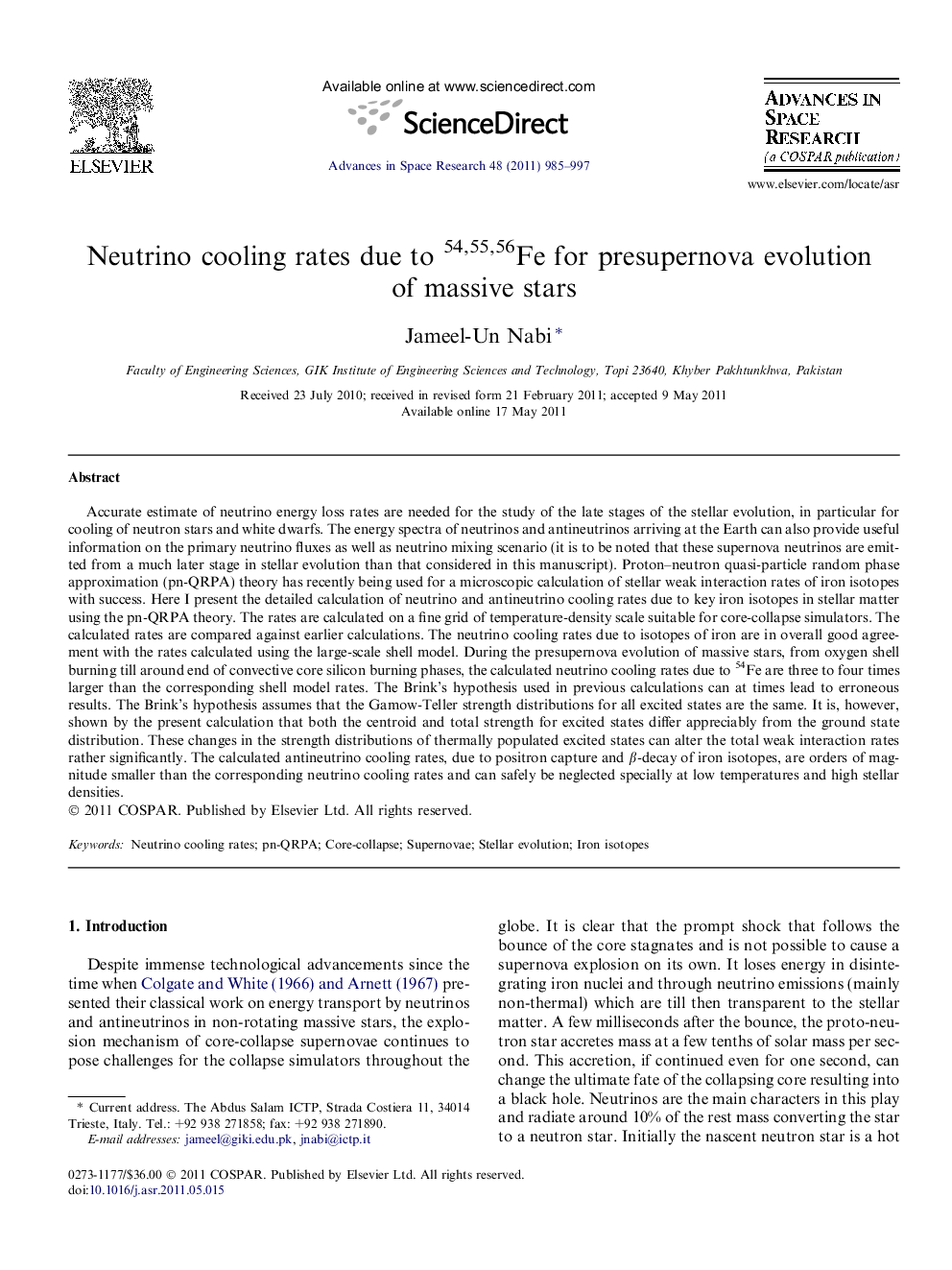| کد مقاله | کد نشریه | سال انتشار | مقاله انگلیسی | نسخه تمام متن |
|---|---|---|---|---|
| 1765119 | 1020085 | 2011 | 13 صفحه PDF | دانلود رایگان |

Accurate estimate of neutrino energy loss rates are needed for the study of the late stages of the stellar evolution, in particular for cooling of neutron stars and white dwarfs. The energy spectra of neutrinos and antineutrinos arriving at the Earth can also provide useful information on the primary neutrino fluxes as well as neutrino mixing scenario (it is to be noted that these supernova neutrinos are emitted from a much later stage in stellar evolution than that considered in this manuscript). Proton–neutron quasi-particle random phase approximation (pn-QRPA) theory has recently being used for a microscopic calculation of stellar weak interaction rates of iron isotopes with success. Here I present the detailed calculation of neutrino and antineutrino cooling rates due to key iron isotopes in stellar matter using the pn-QRPA theory. The rates are calculated on a fine grid of temperature-density scale suitable for core-collapse simulators. The calculated rates are compared against earlier calculations. The neutrino cooling rates due to isotopes of iron are in overall good agreement with the rates calculated using the large-scale shell model. During the presupernova evolution of massive stars, from oxygen shell burning till around end of convective core silicon burning phases, the calculated neutrino cooling rates due to 54Fe are three to four times larger than the corresponding shell model rates. The Brink’s hypothesis used in previous calculations can at times lead to erroneous results. The Brink’s hypothesis assumes that the Gamow-Teller strength distributions for all excited states are the same. It is, however, shown by the present calculation that both the centroid and total strength for excited states differ appreciably from the ground state distribution. These changes in the strength distributions of thermally populated excited states can alter the total weak interaction rates rather significantly. The calculated antineutrino cooling rates, due to positron capture and β-decay of iron isotopes, are orders of magnitude smaller than the corresponding neutrino cooling rates and can safely be neglected specially at low temperatures and high stellar densities.
Journal: Advances in Space Research - Volume 48, Issue 6, 15 September 2011, Pages 985–997